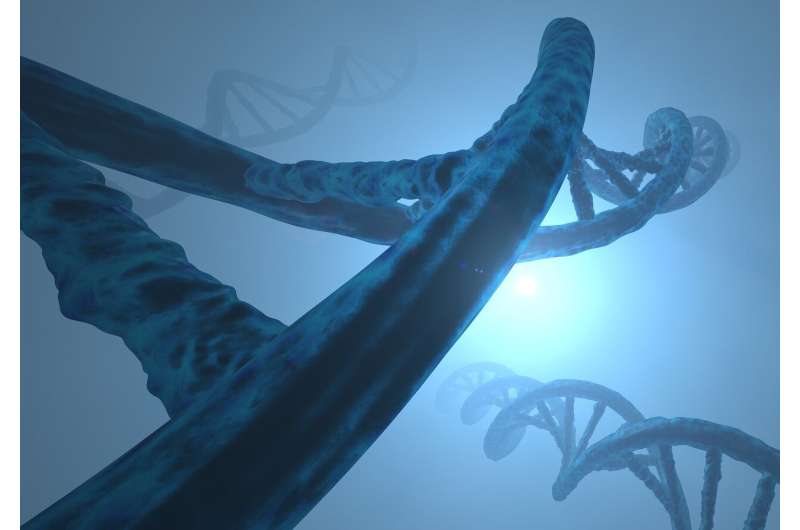July 21, 2021 report
Giant extrachromosomal elements found in methane-metabolizing archaea

A team of researchers from the University of California, Colorado State University and Lawrence Berkeley National Laboratory has discovered a new kind of extrachromosomal element (ECE) living inside of a methane-metabolizing archaea. The paper describing their findings is available on the bioRxiv preprint server.
ECEs are types of DNA that exist outside of the chromosomes. They include viruses and plasmids and generally confer some advantage to the host. With viruses, ECEs tend to help with resisting attacks by bacteria. In this new study, the researchers were looking for ECEs that might prove useful in degrading methane in soil, which is a means for reducing the greenhouse gas emissions in agricultural operations. Their work involved digging into soil and collecting samples of the organisms living in them. As part of that effort, they came upon an ECE that they had not seen before. The most noticeably unique feature of the ECE was its size; samples had between 600,000 and 1 million base pairs. They were so big that they were nearly a third the length of their host's DNA—an archaeon called Methanoperedens. The researchers also found multiple varieties of the ECE, which they named after colors, such as "lilac" or "olive." To date, they have found 23 variations.
The researchers found that it had distinct base pairs on either end of its strands and also sites for replication. They also found bits of the host genome in the ECE strands. The team then ran database searches comparing the new ECE with other mud-dwelling DNA and found multiple matches. The researchers suggest the ECE obtains DNA snippets from other organisms that it encounters, which led them to name it Borg, after the cyborgs of "Star Trek" fame.
The researchers noted that collecting DNA bits from other organisms would require some degree of effort, which suggests there was a purpose. They theorize that the Borg look for and use DNA that helps them oxidize methane. They further propose that their large size suggests they may have once existed as plasmids or viruses.
More information: Basem Al-Shayeb et al, Borgs are giant extrachromosomal elements with the potential to augment methane oxidation, bioRxiv, (2021). DOI: 10.1101/2021.07.10.451761
© 2021 Science X Network



















